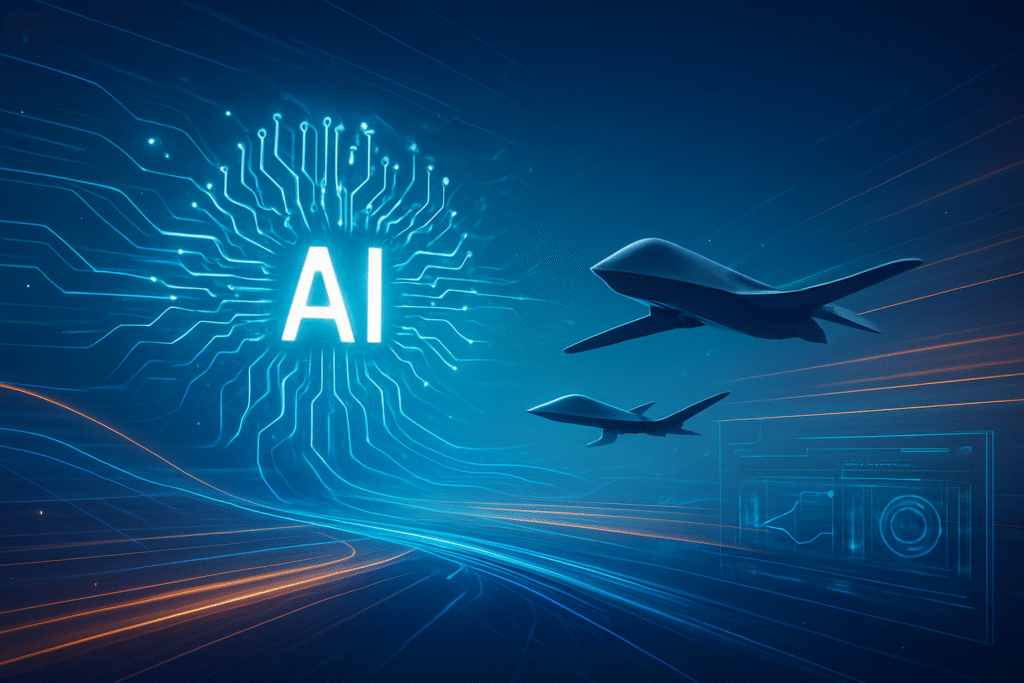
In an era defined by rapid technological advancement, particularly in artificial intelligence, the traditional bureaucratic gears of defense procurement have often proven too slow. Enter BMNT, an expert advisory firm co-founded by Dr. Alison Hawks and Pete Newell, which is spearheading an innovative approach aimed at revolutionizing how the defense sector acquires and integrates cutting-edge technology. Through methodologies akin to those found in the fast-paced startup world, BMNT seeks to dismantle long-standing bureaucratic obstacles, accelerating the delivery of critical AI-driven solutions to warfighters and fostering a more agile and responsive defense industrial base.
The immediate significance of BMNT's strategy is multifaceted. By streamlining the notoriously slow procurement process, BMNT significantly speeds up the innovation cycle, ensuring that solutions developed are practical, relevant, and reach end-users more quickly. This rapid capability delivery is crucial in an age of evolving threats, where multi-year timelines for technology deployment are no longer sustainable. Furthermore, BMNT acts as a vital bridge, facilitating the application of cutting-edge commercial technology to pressing defense challenges, thereby expanding the defense industrial base and encouraging a broader range of companies to contribute to national security.
The Methodological Core: Hacking for Defense and Beyond
BMNT's "AI advancement" is not a singular AI product but rather a profound methodological innovation. At its heart are proprietary frameworks such as "Hacking for Defense" (H4D) and "Hacking for X," which provide a structured, evidence-based system to identify, define, and execute the successful adoption of technology at scale within the Department of Defense (DoD). These methodologies emphasize early and direct collaboration with innovative founders, moving away from lengthy requirements and extensive documentation to foster a startup-like approach.
This approach fundamentally differs from previous defense procurement in several key ways. Historically, defense acquisition has been plagued by a "requirements problem," where rigid, prescriptive demands and bureaucratic systems hinder the government's ability to procure technology efficiently. BMNT actively "disrupts its own requirements process" by focusing on the underlying needs of warfighters rather than dictating specific technical solutions. It integrates Silicon Valley's startup culture, prioritizing agility, rapid iteration, and direct engagement, a stark contrast to the slow, risk-averse internal development or cumbersome off-the-shelf purchasing mechanisms that often characterize government procurement. By acting as a critical bridge, BMNT makes it easier for early-stage and commercial technology companies, including AI firms, to engage with the government, overcoming barriers like lengthy timelines and complex intellectual property (IP) rules.
Initial reactions from the broader defense community and industry experts have been overwhelmingly positive. There's a widespread acknowledgment that AI is revolutionizing military contracting by enhancing efficiency and accelerating decision-making. Experts widely critique traditional procurement as "incompatible with the fast speed at which AI technology is developed," making BMNT's agile acquisition models highly regarded. Initiatives that streamline AI procurement, such as the DoD's Chief Digital and Artificial Intelligence Office (CDAO) and the Tradewind Solutions Marketplace, align perfectly with BMNT's objectives, underscoring the imperative for public-private partnerships to develop advanced AI capabilities.
Reshaping the AI Industry Landscape: Beneficiaries and Disruptions
BMNT's innovative defense procurement approach is significantly reshaping the landscape for AI companies, tech giants, and startups, fostering a "Silicon Valley mentality" within the defense sector.
AI companies, in general, stand to benefit immensely by gaining new pathways and incentives to engage with the defense sector. BMNT highlights the vast potential for AI solutions across military applications, from drone communications to battlefield decision-making, expanding market opportunities for companies developing dual-use technologies. Tech giants like Google (NASDAQ: GOOGL), Microsoft (NASDAQ: MSFT), and Amazon (NASDAQ: AMZN) are encouraged to apply their substantial AI expertise, cloud infrastructure, and R&D capabilities to defense challenges. This opens new revenue streams and opportunities for these companies to showcase the robustness of their platforms, albeit with the added complexity of navigating government-specific requirements.
However, startups are arguably the biggest beneficiaries. BMNT helps them overcome traditional barriers to defense engagement—long, opaque procurement cycles and classification challenges—by providing mentorship and direct access to government customers. Programs like the Small Business Innovation Research (SBIR) provide non-dilutive funding, while BMNT connects startups with investors interested in dual-use companies. For example, Offset AI, which developed drone communication solutions for the Army, identified commercial opportunities in agriculture through BMNT's H4XLabs. Companies embracing the "dual-use" philosophy and demonstrating agility and innovation, such as AI/tech innovators with commercial traction and cybersecurity AI firms, are best positioned to benefit.
The competitive implications are profound. Tech giants and traditional defense contractors face increased competition from nimble startups capable of rapidly developing specialized AI solutions. This also creates new market entry opportunities for major tech companies, while pressuring traditional defense players to adopt more agile, innovation-led approaches. The shift also drives disruptions: obsolete procurement methods are being replaced, there's a move away from bespoke defense solutions towards adaptable commercial technologies, and faster product cycles are becoming the norm, increasing demand for AI-powered analytics over manual processes. This paradigm shift creates significant market positioning and strategic advantages for dual-use companies, the defense sector itself, and any company capable of strategic collaboration and continuous innovation.
Wider Significance: A Catalyst for AI Adoption, Not a Breakthrough
BMNT's approach fits directly into the broader AI landscape and current trends by serving as a crucial accelerator for AI adoption within the Department of Defense. It aligns with the DoD's goals to rapidly deliver and scale AI's impact, fostering a "digital-military-industrial complex" where commercial tech firms collaborate closely with the military. This leverages cutting-edge private-sector AI and addresses the urgency of the "AI arms race" by providing a continuous pipeline of new solutions.
The wider impacts are substantial: enhanced military capabilities through improved situational awareness, optimized logistics, and streamlined operations; increased efficiency in acquisition, potentially saving costs; and the cultivation of a national security talent pipeline as H4D inspires university students to pursue careers in defense. It also promotes a cultural transformation within defense organizations, encouraging agile development and risk-taking.
However, this rapid integration is not without concerns. The ethical implications of AI in warfare, particularly regarding autonomous decision-making and accountability, are paramount. There's a risk of prematurely fielding AI systems before they are truly robust, leading to potential inaccuracies or vulnerabilities. Integration challenges with existing legacy systems, cybersecurity risks to AI platforms, and the potential for a "digital-military-industrial complex" to intensify global rivalries are also significant considerations. Furthermore, deep-seated bureaucratic inertia can still hinder the scaling of new approaches.
It's important to note that BMNT's innovative approach is not an AI milestone or breakthrough in the same vein as the development of neural networks, the invention of the internet, or the emergence of large language models like ChatGPT. Those were fundamental advancements in AI technology itself. Instead, BMNT's significance lies in process innovation and institutional adaptation. It addresses the "last mile" problem of effectively and efficiently getting cutting-edge technology, including AI, into the hands of defense users. Its impact is on the innovation lifecycle and procurement pipeline, acting as a powerful catalyst for application and systemic change, analogous to the impact of agile software development methodologies on the tech industry.
The Horizon: AI-Powered Defense and Enduring Challenges
Looking ahead, BMNT's innovative defense procurement approach is poised for significant evolution, influencing the trajectory of AI in defense for years to come. In the near term, BMNT plans to scale its "Hacking for Defense" programs globally, adapting them for international partners while maintaining core principles. The firm is also building market entry services to help non-traditional companies navigate the complex defense landscape, assisting with initial customer acquisition and converting pilot programs into sustained contracts. Continued embedding of Mission Deployment Teams within government commands will accelerate missions, and a key focus will remain on aligning private capital with government R&D to expedite technology commercialization.
Long-term developments envision a global network of talent and teams collaborating across national borders, fostering a stronger foundation for allied nations. BMNT is dedicated to mapping and tapping into relevant innovation ecosystems, including over 20,000 vetted startups in AI, advanced manufacturing, and deep tech. The ultimate goal is a profound cultural transformation within defense acquisition, shifting from rigid program-of-record requirements to "capability-of-record" portfolio-level oversight and performance-based partnerships.
The potential applications and use cases for AI in defense, influenced by BMNT's agile methods, are vast. Near-term applications include enhanced decision-making through advanced analytics and generative AI acting as "copilots" for commanders, real-time cybersecurity and threat detection, predictive maintenance for critical assets, human-machine teaming, and highly realistic training simulations. Long-term, fully autonomous systems—UAVs, ground robots, and naval vessels—will perform surveillance, combat, and logistics, with advanced loitering munitions and networked collaborative autonomy enabling swarms of drones. Companies like Shield AI are already unveiling AI-piloted fighter jets (X-BAT) with ambitious timelines for full mission capability. By 2030, intelligence officers are expected to leverage AI-enabled solutions to model emerging threats and automate briefing documents, while multimodal AI agents will streamline security operations and identify vulnerabilities.
Despite this promising outlook, significant challenges remain. Traditional defense acquisition cycles, averaging 14 years, are fundamentally incompatible with the rapid evolution of AI. Data availability and quality, especially classified battlefield data, pose hurdles for AI training. There's a scarcity of AI talent and robust infrastructure within the armed forces. Ethical, legal, and societal concerns surrounding autonomous weapons and AI bias demand careful consideration. Ensuring model robustness, cybersecurity, and interoperability with legacy systems are also critical. Finally, a fundamental cultural shift is required within defense organizations to embrace continuous innovation and risk-taking. Experts predict that AI will profoundly transform warfare within two decades, with military dominance increasingly defined by algorithmic performance. They emphasize the need for policy "guard rails" for ethical AI use and a mission-focused approach to solve "mundane, boring, time-wasting problems," freeing up human talent for strategic work. Leveraging private partnerships, as BMNT champions, is seen as crucial for maintaining a competitive edge.
A New Era of Defense Innovation
BMNT's innovative approach, particularly through its "Hacking for Defense" methodology, represents a pivotal shift in how the defense sector identifies, validates, and deploys critical technologies, especially in the realm of Artificial Intelligence. While not an AI technological breakthrough itself, its significance lies in being a crucial process innovation—a systemic change agent that bridges the chasm between Silicon Valley's rapid innovation cycle and the Pentagon's pressing operational needs. This agile, problem-centric methodology is accelerating the adoption of AI, transforming defense procurement from a slow, bureaucratic process into a dynamic, responsive ecosystem.
The long-term impact of BMNT's work is expected to foster a more agile, responsive, and technologically advanced defense establishment, vital for maintaining a competitive edge in an increasingly AI-driven global security landscape. By cultivating a new generation of mission-driven entrepreneurs and empowering dual-use technology companies, BMNT is laying the groundwork for continuous innovation that will shape the future of national security.
In the coming weeks and months, observers should watch for the continued scaling of BMNT's H4D programs, the success stories emerging from its market entry services for non-traditional companies, and how effectively ethical AI guidelines are integrated into rapid development cycles. The pace of cultural shift within the Department of Defense, moving towards more agile and performance-based partnerships, will be a key indicator of this revolution's enduring success.
This content is intended for informational purposes only and represents analysis of current AI developments.
TokenRing AI delivers enterprise-grade solutions for multi-agent AI workflow orchestration, AI-powered development tools, and seamless remote collaboration platforms.
For more information, visit https://www.tokenring.ai/.







